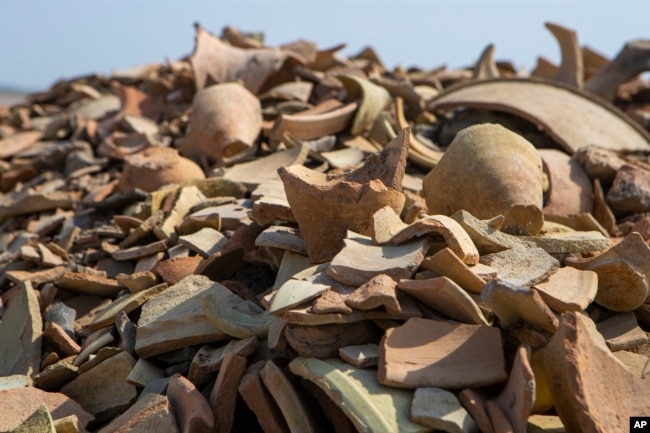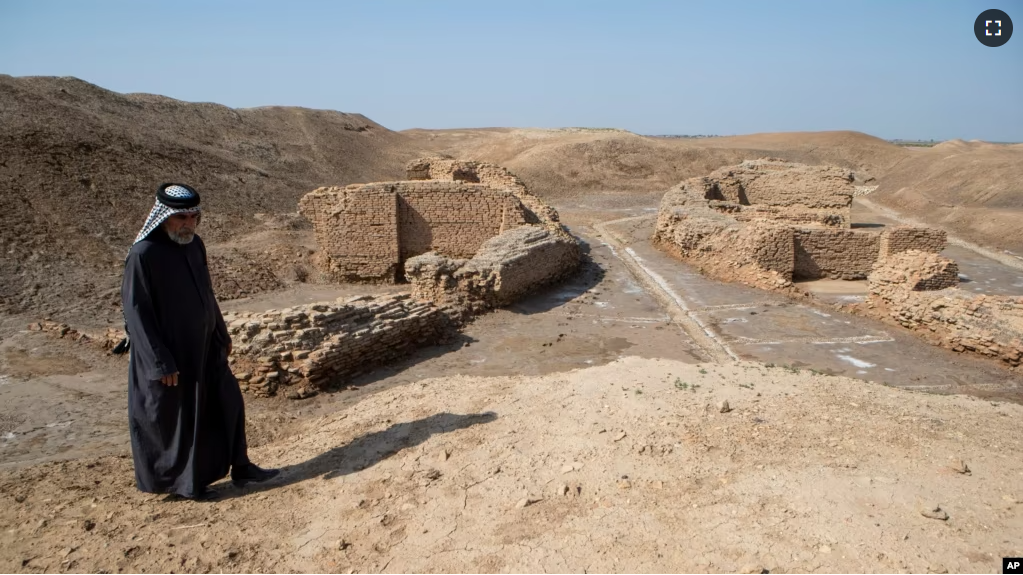An international research project has found the remains of what is believed to be a 5,000-year-old restaurant in southern Iraq. The discovery, announced in late January, comes at a time of great growth in Iraqi research and preservation efforts.
Iraq is often called the “cradle of civilization” – meaning the birthplace of complex societies. The country is home to six UNESCO-listed world heritage sites, among them the ancient city of Babylon. It was home to several ancient empires under rulers like Hammurabi and Nebuchadnezzar.
But research efforts have been hurt by years of conflict before and after the United States invasion of Iraq in 2003. Many of the country’s ancient treasures and other valuable property were stolen during this time.
Laith Majid Hussein, director of the State Board of Antiquities and Heritage of Iraq, told The Associated Press that the effects of the stealing “were very severe.”
As peace returned in recent years, researchers have as well. At the same time, thousands of stolen objects have been returned, offering hope of an archeological rebirth, or renaissance.
Lagash
Digging at Lagash has taken place on and off since the 1930s. Unlike many historic sites, Lagash did not have many objects stolen. This is largely due to the efforts of people living in the area, said Zaid Alrawi, an Iraqi archeologist who is the project manager at the site.
People who came to the area to steal were run off by “local villagers who consider these sites basically their own property,” he said.
A temple area and the remains of important buildings had been uncovered in earlier digs. So, when archeologists returned in 2019, Alrawi said, they paid careful attention to areas that would give clues to the lives of ordinary people. Researchers began by examining what turned out to be a pottery workshop containing several kilns. Kilns are kinds of ovens or furnaces used to dry or harden objects made of clay or other materials.
Further digging in the area near the workshop uncovered a large room containing a fireplace for cooking. The area also had seating and a food cooling system made with clay jars placed in the ground.
The site is believed to date to around 2,700 BC.

Alrawi said he believes the restaurant was a simple eating place to feed workers from the pottery workshop next door.
“I think it was a place to serve whoever was working at the big pottery production next door, right next to the place where people work hard, and they had to eat lunch,” he said.
Alrawi, whose father was also an archeologist, grew up visiting sites around the country. Today, he is happy to see many research digs returning to Iraq.
“It’s very good for the country and for the archeologists, for the international universities,” he said.
Positive changes
As archeological exploration has increased, international dollars have flowed into Iraqi projects. Workers are restoring damaged ancient sites like the al-Nouri mosque in Mosul. Iraqi officials have pushed to bring back stolen pieces from countries as near as Lebanon and as far as the United States.
Last month, Iraq’s national museum began opening its doors to the public for free on Fridays — a first in recent history. Families walked through halls lined with ancient objects such as Assyrian tablets. They also got a up-close look at one of the most famous of Iraq’s returned objects: a small clay tablet dating back 3,500 years. The clay tablet has part of the ancient poem the Epic of Gilgamesh written on it.
The tablet was stolen from an Iraqi museum more than thirty years ago. The United States returned the tablet to Iraq two years ago. The U.S. has returned about 17,000 stolen objects to Iraq over the years.
Ebtisam Khalaf, a history teacher who was one of the visitors to the museum on its first free day, said it was a beautiful event. Khalaf liked that visitors were able to “see the things that we only used to hear about.”
I’m John Russell.
And I’m Ashley Thompson.
Abby Sewell reported on this story for the Associated Press. John Russell adapted it for VOA Learning English.
____________________________________________________________________
Words in This Story
preserve – v. to keep (something) in its original state or in good condition
site – n. the place where something (such as a building) is, was, or will be located
empire – n. a group of countries or regions that are controlled by one ruler or one government
pottery – n. objects (such as bowls, plates, etc.) that are made out of clay usually by hand and then baked at high temperatures so that they become hard
museum – n. a building in which interesting and valuable things (such as paintings and sculptures or scientific or historical objects) are collected and shown to the public
